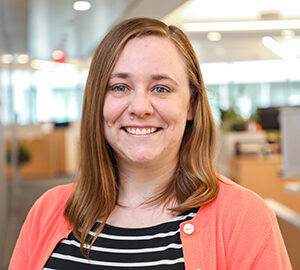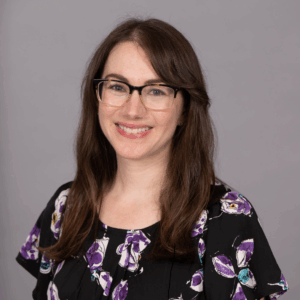Universal pre-kindergarten education represents a transformative approach to ensuring all children enter kindergarten ready to succeed.
In Seattle, WA, the Seattle Preschool Program (SPP), launched in 2015, demonstrates how cities can successfully implement comprehensive early learning systems through stable funding, quality standards and community responsiveness. Through a collaborative process with state, county and city partners, the city formalized a Memorandum of Understanding (MOU) that established how partners would work together, with city leaders engaged in challenging but necessary conversations to ensure clear roles and responsibilities without duplication of efforts.
With dedicated attention to equity and inclusion, data-driven improvement and sustained community engagement, Seattle has created a model that other cities can learn from. The program has shown consistent growth, expanding from serving 280 children in its first year to 2,256 children, on track to achieve their goal of reaching 2,500 children by 2026.
The City of Seattle’s approach to universal pre-K is particularly notable for its emphasis on cultural responsiveness and community engagement. The program utilizes comprehensive outreach strategies to ensure high enrollment and community involvement, offering subsidized slots based on income and providing robust language support for non-English speaking families. Many SPP sites exemplify this commitment through multilingual instruction that honors children’s home languages while supporting English language development, and through trauma-informed care practices that respond sensitively to the varied experiences children bring to the classroom. Sites often impressively blend multiple funding sources to create culturally rich environments that integrate diverse cultural and language traditions into daily learning. The program uses a sliding scale tuition model where families earning up to 350% of the federal poverty level receive free tuition, while those above pay a percentage of the cost based on their income, ensuring financial accessibility while maintaining program sustainability. Geographic accessibility is prioritized, with programs strategically located throughout the city to ensure all neighborhoods have access to quality early learning opportunities.
“The early learning investments have not supplanted the early learning system that was already in place. Bringing in community based organizations, bringing in the school district, bringing in family child care centers, and finding a way to make sure there is quality in the system that already exists versus saying that we’re going to take over everything that has been here.”
– Katie Sauter, Preschool Enrollment Supervisor, City of Seattle
Here’s What They Did
- Seattle’s approach to sustainable funding through voter-approved levies demonstrates the importance of building public will for early childhood investments. The city conducted extensive community engagement and education about the benefits of high-quality pre-K before placing the initial SPP levy on the ballot in 2014. Prior to seeking voter approval, the city developed a detailed implementation plan with clear quality standards, equity goals and accountability measures to build confidence in the program. When the time came to renew and expand funding in 2018, the city was able to point to concrete results from the initial implementation period, helping secure overwhelming voter support for the larger FEPP levy that now funds SPP through 2026. This strategic approach to building and maintaining public support has created stable, long-term funding that allows for program quality and expansion.
- Seattle’s commitment to continuous quality improvement is demonstrated through its comprehensive annual evaluation process. The city partners with external evaluators to assess program quality and child outcomes regularly, using standardized tools like the Classroom Assessment Scoring System (CLASS) and teaching strategies GOLD. The 2024 evaluation (PDF) shows impressive results, with CLASS scores increasing by 1.5 percent in emotional support and 19 percent in instructional support over the last year. The evaluation also demonstrated SPP’s significant impact on kindergarten outcomes, with SPP children showing higher attendance rates and kindergarten readiness scores compared to similar children in state-funded preschool. Importantly, these evaluations aren’t just for accountability, but drive real changes in practice. When data showed the need for stronger instructional supports, the city redesigned its coaching model and professional development offerings to better support teachers. This continuous improvement cycle ensures the program evolves based on evidence rather than assumptions.
Your Next Steps for Getting Started
- Complete a comprehensive community needs assessment to understand current landscape. This includes mapping existing early childhood programs and services in your community to identify gaps and opportunities.
- Develop priority selection, enrollment criteria and processes that prioritize equity and accessibility. Consider implementing a sliding scale tuition model where families below certain income thresholds receive free services while others pay based on ability.
- Establish quality standards and metrics aligned with national best practices. Work with experts to develop benchmarks for teacher qualifications, class sizes, staff-child ratios, and curriculum requirements.
- Begin community outreach and engagement to build early support. Create family engagement strategies and communication plans that reach diverse communities through multiple channels.
- Design curriculum framework with cultural responsiveness and inclusion in mind. Ensure materials and approaches reflect the diverse backgrounds and experiences of children in your community.
Helpful Tips for Ongoing Success
- Maintain a mixed-delivery model that supports both new and existing providers. Each provider operates differently, allowing for flexibility while maintaining quality standards creates a stronger system.
- Develop strong partnerships with research institutions for program evaluation and improvement. Establish data sharing agreements with evaluation partners to track outcomes and make evidence-based adjustments.
- Ensure broad stakeholder engagement in program design and implementation. This collaborative approach helps create culturally responsive curriculum and assessment tools that meet community needs.
- Implement regular community feedback mechanisms and establish clear quality standards. Create monitoring systems that balance accountability with support for continuous improvement.
- Build public will for sustainable funding through education about program benefits and transparent reporting on outcomes. Consider developing a voter-approved dedicated funding stream like a levy or tax to provide stable, long-term resources for program quality and expansion.
Explore the ‘Decades in the Making’ Early Childhood Toolkit
What happens when a local government chooses to prioritize young children, their families and the early childhood workforce for years at a time? That’s the question this new toolkit answers. Explore it to get practical insights and clear next steps to begin implementing proving policy wins in your community.









